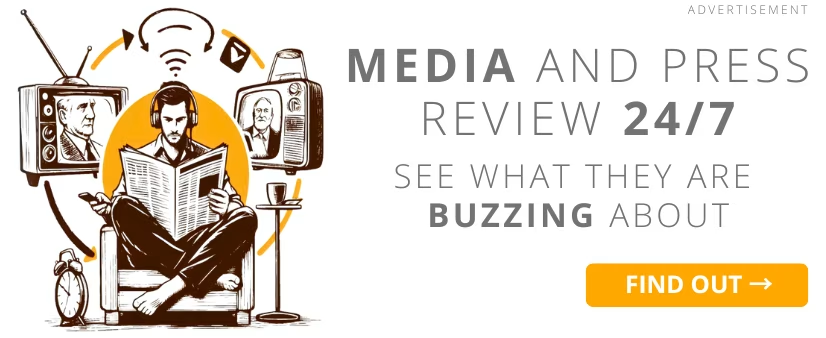 Photo: Gerd Altmann/cc0/Pixabay.com
Photo: Gerd Altmann/cc0/Pixabay.comThe survey of Polish consumers reveals that 66% of respondents pay for subscriptions to video streaming platforms. This 20% increase indicates a growing market, with further development expected as three major global streaming platforms plan to launch in Poland in 2022. For comparison, 76% of respondents in the UK already have subscriptions.
According to the *Digital Consumer Trends 2021* report by Deloitte:
- The highest growth in paid streaming users occurred in the 55-65 age group, up 39% in a year.
- The 25-34 age group saw the second-largest growth, at 26%.
- Considering the maturity of the Polish market for paid video content and the still limited number of key global players, we can expect significant changes in the coming years, says Sławomir Lubak, partner and leader of the telecommunications, media, and technology sector at Deloitte. - One of the biggest challenges for service providers will be ensuring excellent customer experience and leveraging innovative technological solutions in this context.
One in Ten Users Cancels Subscriptions
Deloitte`s research on the highly competitive U.S. market highlights the importance of retaining customers and understanding trends in subscription cancellations. Over the past two years, the churn rate in the U.S. was over three times higher than in Poland (37% vs. 11%).
Poles also take longer to cancel their subscriptions:
- 45% cancel two to three months after first considering the option.
- In the U.S., 43% cancel on the same day they decide.
- In the UK, this figure is 23%.
Experts at Deloitte point out that the ease of cancellation has become a significant factor in speeding up this process. A single click in an app eliminates the opportunity for call centers to persuade hesitant customers to stay. In Poland, the longer decision-making process allows companies to emphasize the value of their services by effectively communicating their full offerings rather than relying solely on flagship productions.
The survey also reveals that most users who cancel video streaming subscriptions express an intention to return. Therefore, maintaining communication with former subscribers through legal and technical means is crucial.
- It`s essential to note that customer consent for data processing is required for marketing communication, even after the termination or expiration of a contract, says Karolina Smolarek, Senior Associate at Deloitte Legal, Deloitte. - This means that personal data of former customers can only be processed for marketing purposes if explicit consent is obtained.
The second part of the *Digital Consumer Trends 2021* report is available at:
https://www2.deloitte.com/pl/pl/pages/technology-media-and-telecommunications/articles/Digital-Consumer-Trends-2021-part-2.html
COMMERCIAL BREAK
New articles in section Media industry
Advertising market 2025. Poland, Europe and the World
Marcin Grządka
The global advertising market is growing by 8.8% in 2025 and will reach a value of 1.14 trillion dollars. The industry result in Europe records slightly lower dynamics, at the level of 5.8%. In this comparison, Poland performs clearly above the average. We will record an increase of 8.9% this year and a value of 18.56 billion PLN - estimates WPP Media in the annual report "This Year Next Year".
The print media market 2025. Three global trends
Krzysztof Fiedorek
The market value is 359.53 billion dollars, yet the erosion is visible to the naked eye. The decline for newspapers will amount to -2.3 percent. Despite this, print retains strength: it generates 76 percent of subscription revenues and enjoys 82 percent consumer trust. The future of the industry is defined by hybrid strategies and niche specialization.
Journalism in the age of AI. Why people prefer humans over machines
Krzysztof Fiedorek
Only 12% of people accept news created solely by AI, while 62% prefer those written by humans. At the same time, only 19% notice labels indicating the use of artificial intelligence, while younger audiences ask AI to explain the content to them. These are the findings of the Reuters Institute report on artificial intelligence in media.
See articles on a similar topic:
The Deadliest Year for Journalism. 124 Fatalities in 2024
Krzysztof Fiedorek
The year 2024 was the deadliest for media professionals since the Committee to Protect Journalists began tracking these statistics. The tragic figures, published in CPJs latest special report, reached record highs in most monitored categories.
Who Reads the Press? Studies on Credibility, Reach, and Effectiveness
Sylwia Markowska
Press for advertising clients is an effective medium for building brand trust, fame, and popularity. According to global studies, it is one of the media with the highest return on advertising. Data collected by Polskie Badania Czytelnictwa (Polish Readership Research) indicates that the press also has exceptionally high ad visibility rates, as reading requires full concentration on content.
Disinformation 2024. Major Threats According to the Global Risk Report
KrzysztoF
In 2024, the world will face several global threats, including disinformation, climate change, and armed conflicts. These three challenges will have a significant impact on the economy, society, and the environment. These findings come from the "Global Risks Report" by the World Economic Forum.
How Journalists Use Social Media
Bartłomiej Dwornik
Primarily, they seek inspiration from blogs and, less frequently, from Facebook. They rarely trust what they find, often approaching it with caution. Credibility does not necessarily correlate with attractiveness.





























